This one-pot stew of onions, carrots, and potatoes is enjoyed throughout the winter months in the Netherlands. Vegan Hutspot is simple, straightforward comfort food that will warm you right up, no matter how cold it is outside. (For other cozy winter recipes made in the Dutch oven, check out Romanian Mămăligă or Mexican Frijoles.)
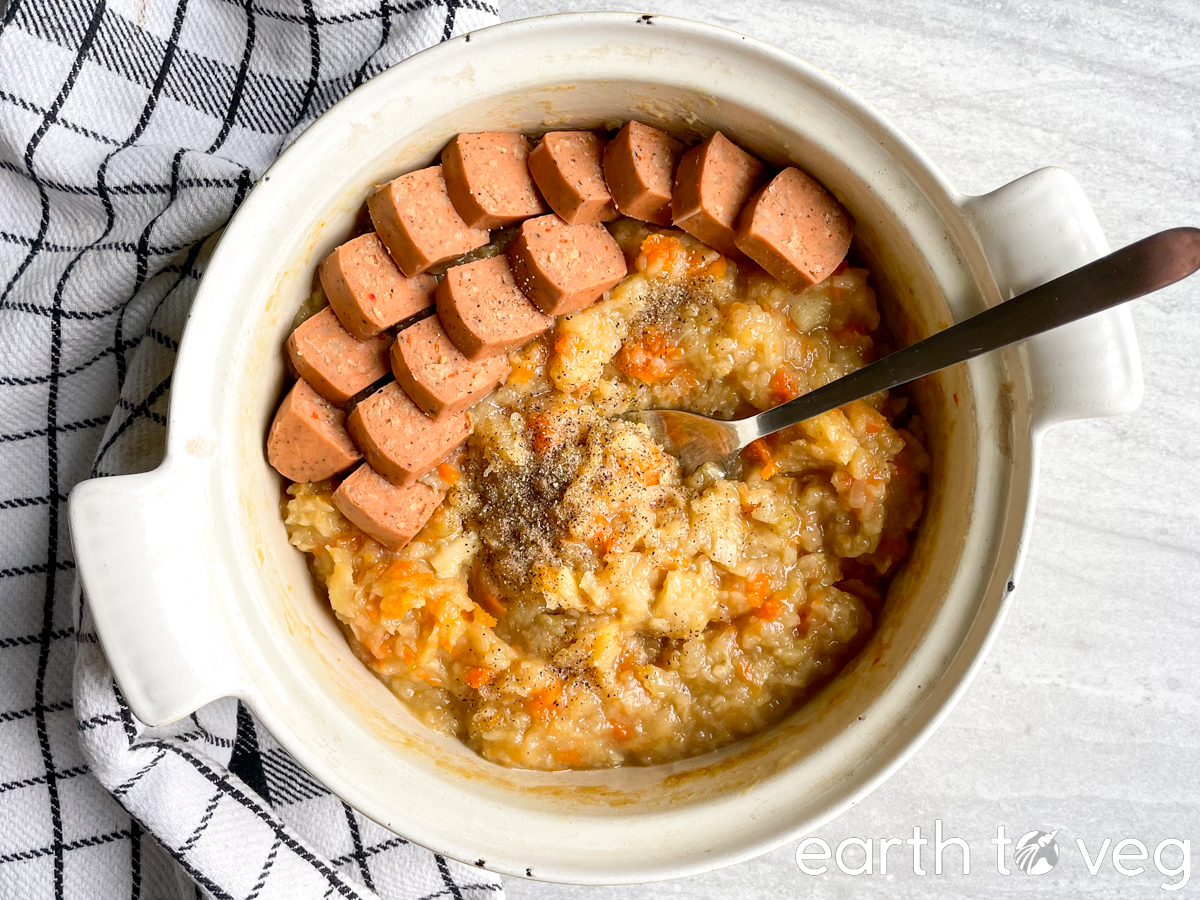
History & Origins
According to one of my roommates from the Netherlands: “Think of any food, now boil it. That’s Dutch food.”
Based on that description, hutspot is the quintessential Dutch dish: boiled and mashed winter root vegetables.
I found out about hutspot when I bought a bag of parsnips from the farmer’s market. In my search for a parsnip recipe, I stumbled upon this blog post about historical Dutch foods. I learned that hutspot, which now uses potato but was originally made with parsnips, has been a mainstay of Dutch cuisine for hundreds of years!
The well-established Dutch recipes compiled in the seventeenth-century cookbook De Verstandige Kock (The Sensible Cook) shows that stewing was by far the most common cooking method, at least in affluent middle-class households in the Netherlands … A hutspot or a one-pot stew acquired the status of a national dish by the mid-seventeenth century throughout the Netherlands; it was prepared with different ingredients, depending on one’s level of wealth.
Kaoru Ueda and Sonny C. Wibisono, Dutch Oven and Bantenese Cooking Stove
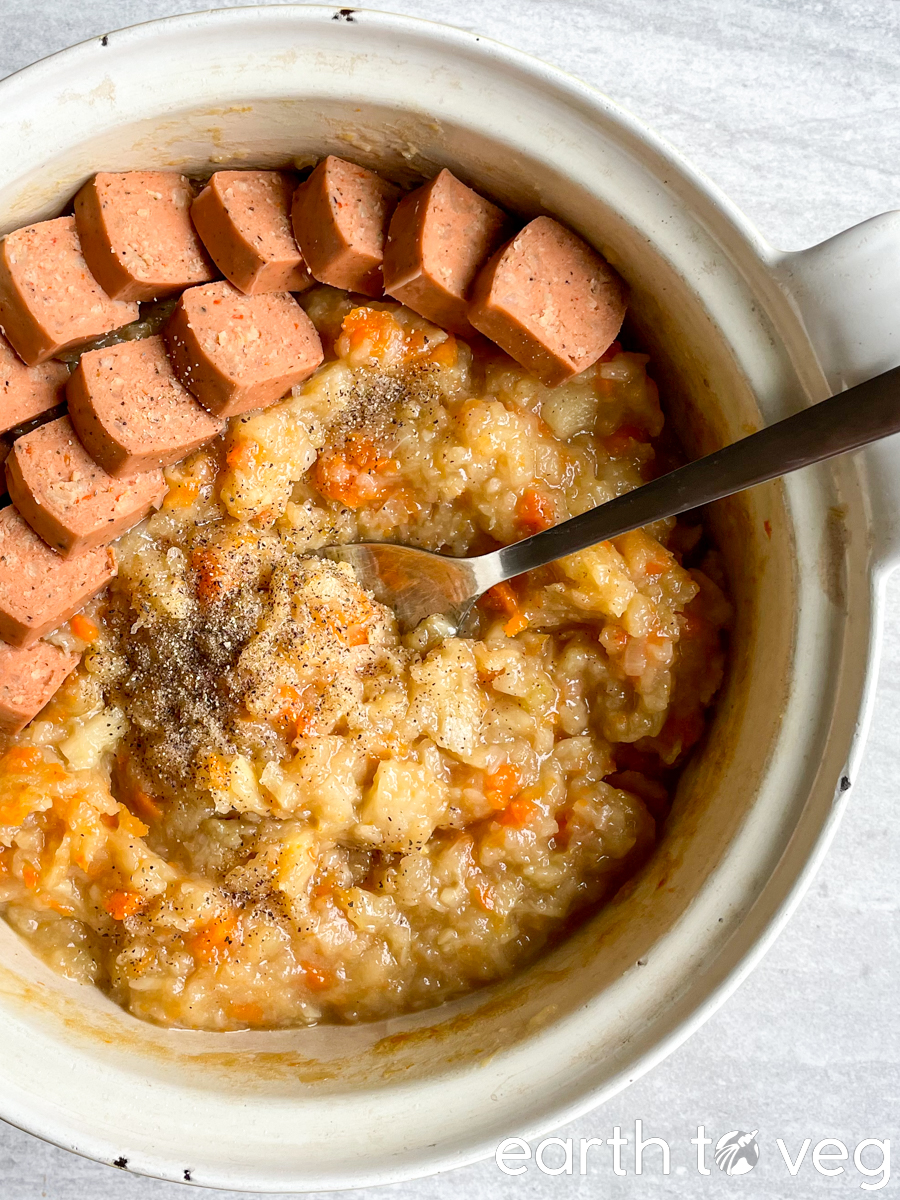
Leidens Ontzet
In 1574, the Netherlands was in the middle of fighting its war of independence from the Spanish Empire. Leiden had been under siege by the Spanish for several months, and food was running low. Conditions were so bad that at one point, the burgemeester (mayor) of the city offered himself up for cannibalization: “Cut off my arm and feed it to your children.”
The Dutch began working on a plan to destroy their own dikes in order to flood the countryside where the Spanish were camped. In early October, with the help of a storm, they were finally able to flood the camps. The Spanish soldiers thought they were under attack, freaked out, and fled in such a hurry that they left pots of food behind. The starving citizens of Leiden found half-cooked carrots, onions, and pastinaak (parsnip), and had a feast.
The liberation of Leiden on October 3rd is celebrated each year in a festival called Leidens Ontzet, and eating hutspot is a must.
These days, potatoes have replaced parsnip in most hutspot recipes. Back in 1574, potato was a newfangled crop introduced from the New World and relatively unknown in the Netherlands. But nowadays it’s preferred over the more traditional parsnip. (Having tried both versions myself, I prefer the one made with potatoes too. 🥔)
Hutspot is a traditional stewy soup (or soupy stew), a Dutch variation on the kind made throughout Europe … Its origins are in fact Spanish, but you can see that it has a Dutch pedigree because the vegetables are mashed; stamppot, any combination of mashed vegetables, is the national dish.
Mark Bittman, Who Doesn’t Love Boerenjongens?
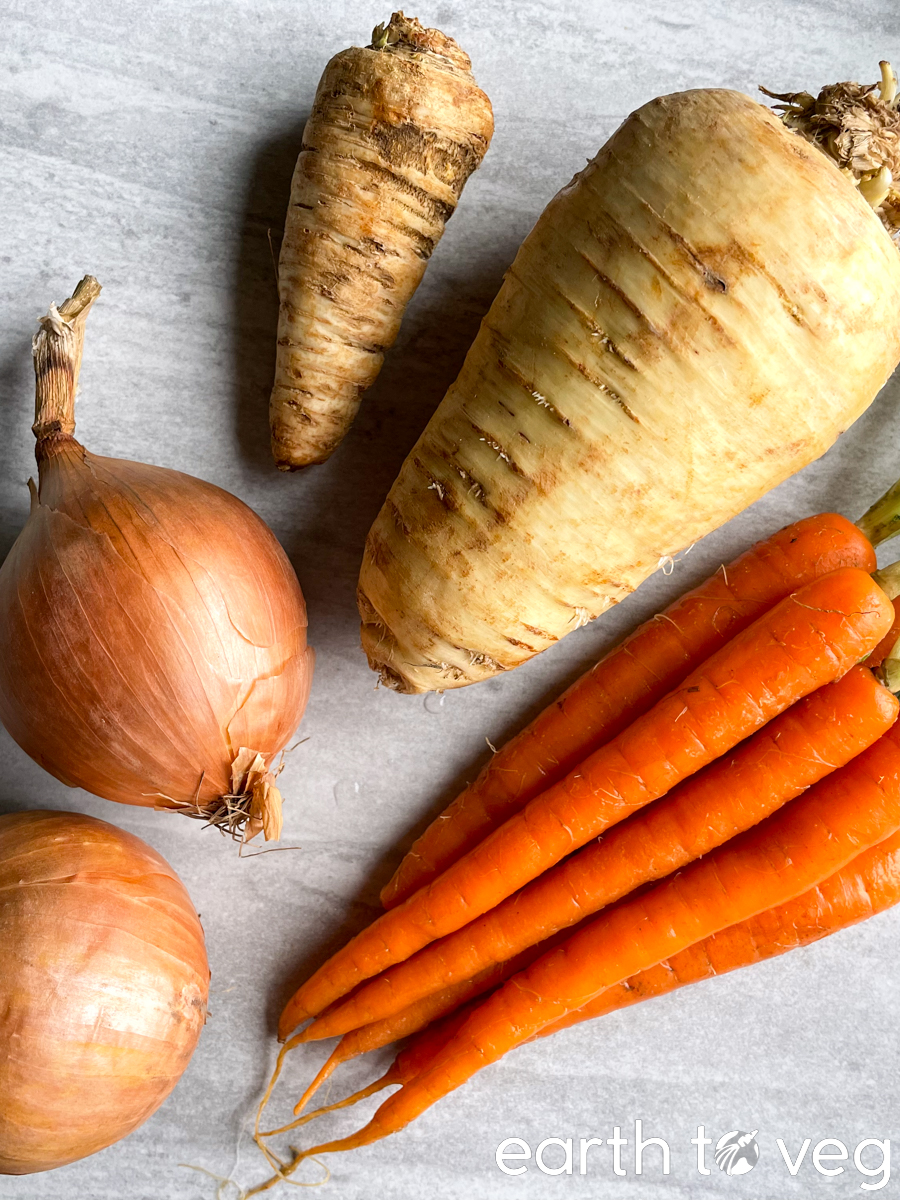
A “Hotch Potch” of Ingredients
Another good thing about hutspot is how versatile it is. It falls under the broader category of stamppot or “mush pot” which refers to all dishes of boiled and mashed vegetables. Besides this basic vegan hutspot, other common varieties include:
- Andijviestamppot (mashed endive or escarole)
- Boerenkoolstamppot (cabbage or kale mashed into potatoes)
- Zuurkoolstamppot (mashed sauerkraut with potatoes)
In short, hutspot can be as simple or as fancy as you like. Back in the day, including many different ingredients in your stamppot was a signal of wealth. But today, all kinds of stamppot are appreciated, even the humble hutspot of parsnip, carrot, and onion that once saved a Dutch city from starvation.
It is the ideal recipe for households from all strata of society. The affluence of the diners can be traced by the contents of the pot: (much) meat, fish, or poultry and (abundant) use of herbs and spices indicated a family of better standing than the owners of a pot filled with turnips, tubers, and bacon for flavor.
Merit Hondelink, Vijf eeuwen hutspot: een geschiedenis van de Nederlandse stamppot met wortelen (translated from the Dutch)
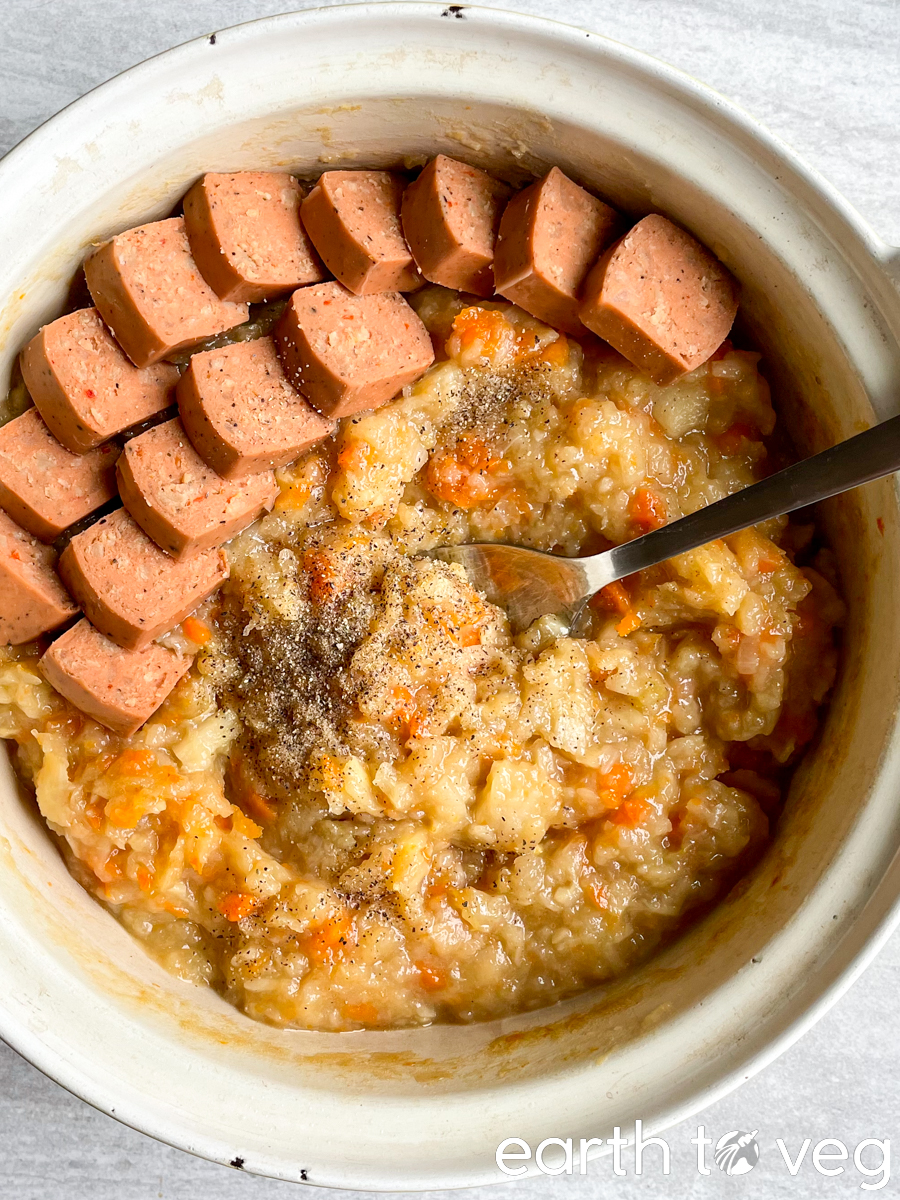
What You’ll Need
Below are the grocery items for a basic vegan hutspot, sticking close to its Leiden roots. Feel free to dress it up with additional ingredients if you wish (see Flavour Variations below).
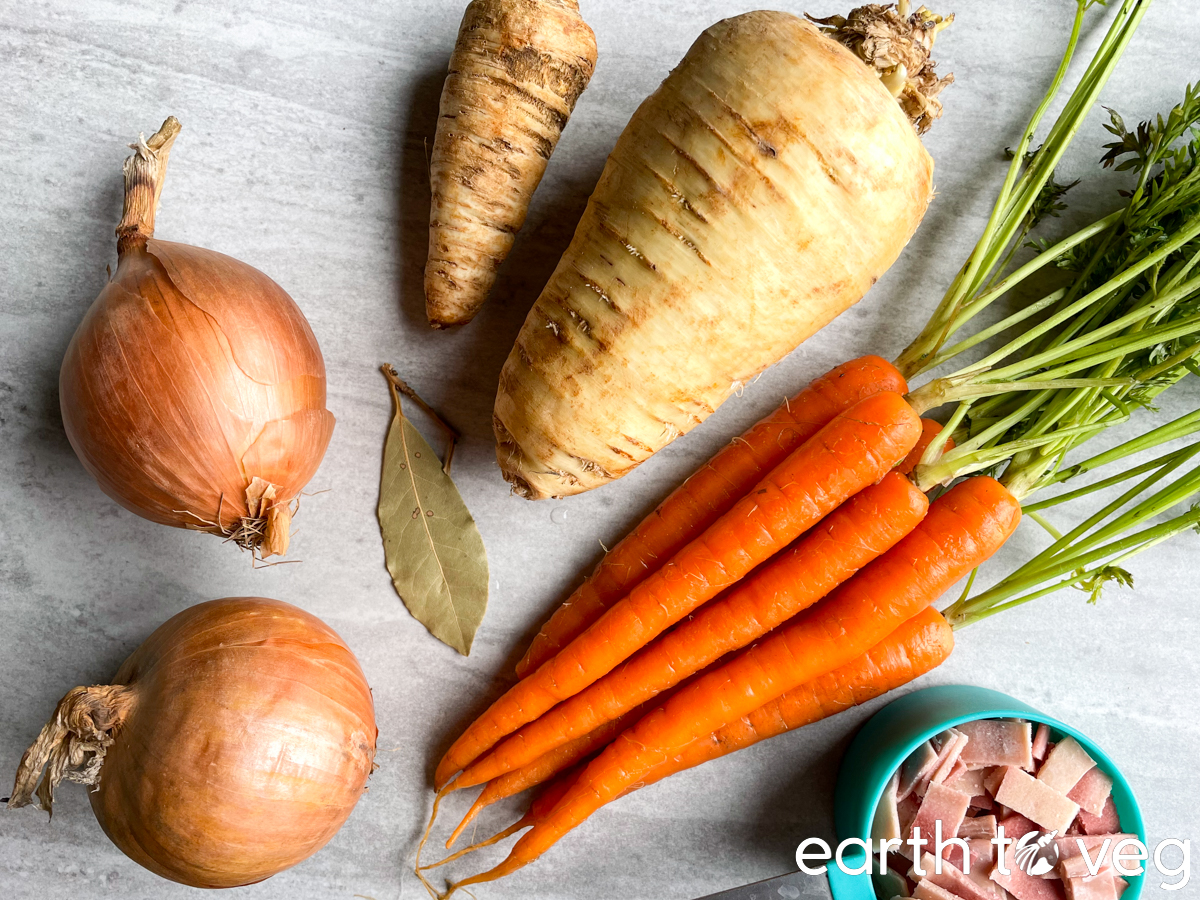
The main ingredients are carrots, onions, and potato (or parsnip, if you want to stick to the original version). The carrots used for hutspot in the Netherlands are called winterpeen (”winter carrots”) but this doesn’t seem to be commonly available outside Europe, so normal carrots will have to do. I prefer using potatoes over parsnips, but if you are using parsnip, try to look for small ones, as larger ones (like the one pictured here) might have a woody center. Still edible, just fibrous.
Some vegan butter is essential to give the hutspot vegetables a more full-bodied flavour. You can even double the amount of butter for a more luxurious taste!
It’s common to add bits of smoked bacon to hutspot, so throw in some vegan ham or bacon if you have it. I’m using Hooray Bacon which has a nice smoky seasoning and also adds some more fat.
Finally, use a bay leaf, a good vegetable stock (or use Better than Bouillon No Beef Base), and add salt and ground black pepper to taste at the end. To make this a one-pot recipe with no draining of water required, I use only 1 cup of vegetable stock. This allows the hutspot to reach a perfect consistency by the time it’s done cooking, and you don’t have to waste any of the flavourful stock.
For a full list of ingredients and quantities, refer to the recipe card at the bottom of this post.
Flavour Variations
Here are some ways you can spice up the basic hutspot recipe with additional flavours. These additions are all quite common in Dutch cuisine:
- Add chopped garlic to sauté together with the onion.
- Add a pinch of nutmeg.
- Serve with gravy and mustard.
- Throw in some vegan beef chunks during the cooking. This variation is called Hutspot met Klapstuk (klapstuk means braised beef) or Leyden Hutspot. It is still eaten in Leiden for the Leidens Ontzet festival on October 3rd of each year.
- An Indo version (Dutch–Indonesian fusion cuisine) adds garlic, soy sauce, and sambal oelek to give hutspot an Asian flair.
If you made a change to this recipe and loved it, please let me know! Post a comment describing what you did so it can inspire future readers.
Make Ahead & Storage Tips
Fridge: Hutspot keeps in the fridge for over five days in an airtight container. I like to store it right in the Dutch oven where I cooked it to make reheating leftovers easy. When I want to eat, I simply add a splash of water and put the whole Dutch oven back on the stove on low heat.
Freezer: I haven’t tried freezing hutspot yet. However, commenter Stans reports that he frequently freezes hutspot and it freezes well!
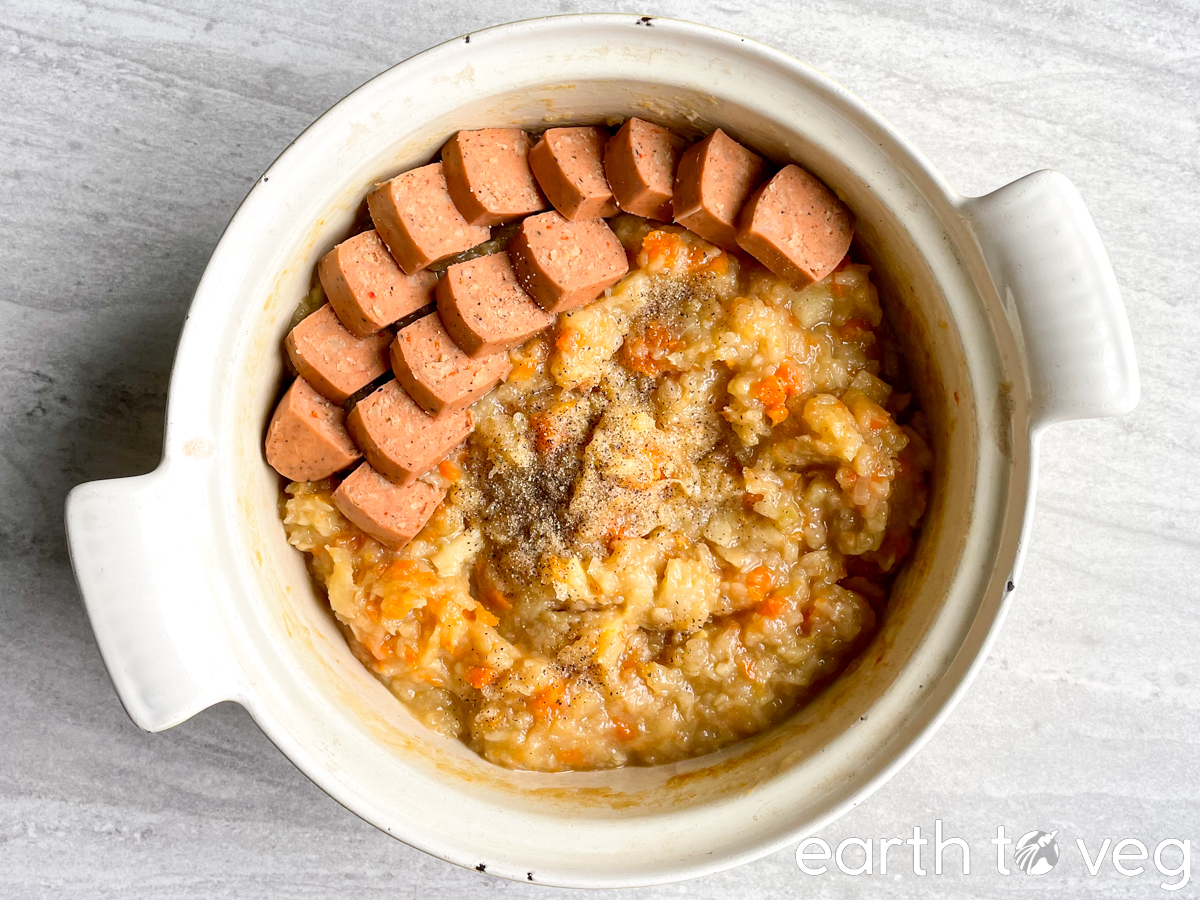
What to Serve with Hutspot
- During Leidens Ontzet, hutspot is traditionally eaten together with white bread, such as this easy One-Rise Sandwich Loaf.
- Another popular method in the Netherlands is to serve grilled sausages on top, like these Vegan Okara Sausages (use kielbasa seasoning).
- Some versions of stamppot use kale as an ingredient in the mash. If eating this hutspot as your main dish, why not dish up some Roasted Kalettes on the side?
More European Recipes
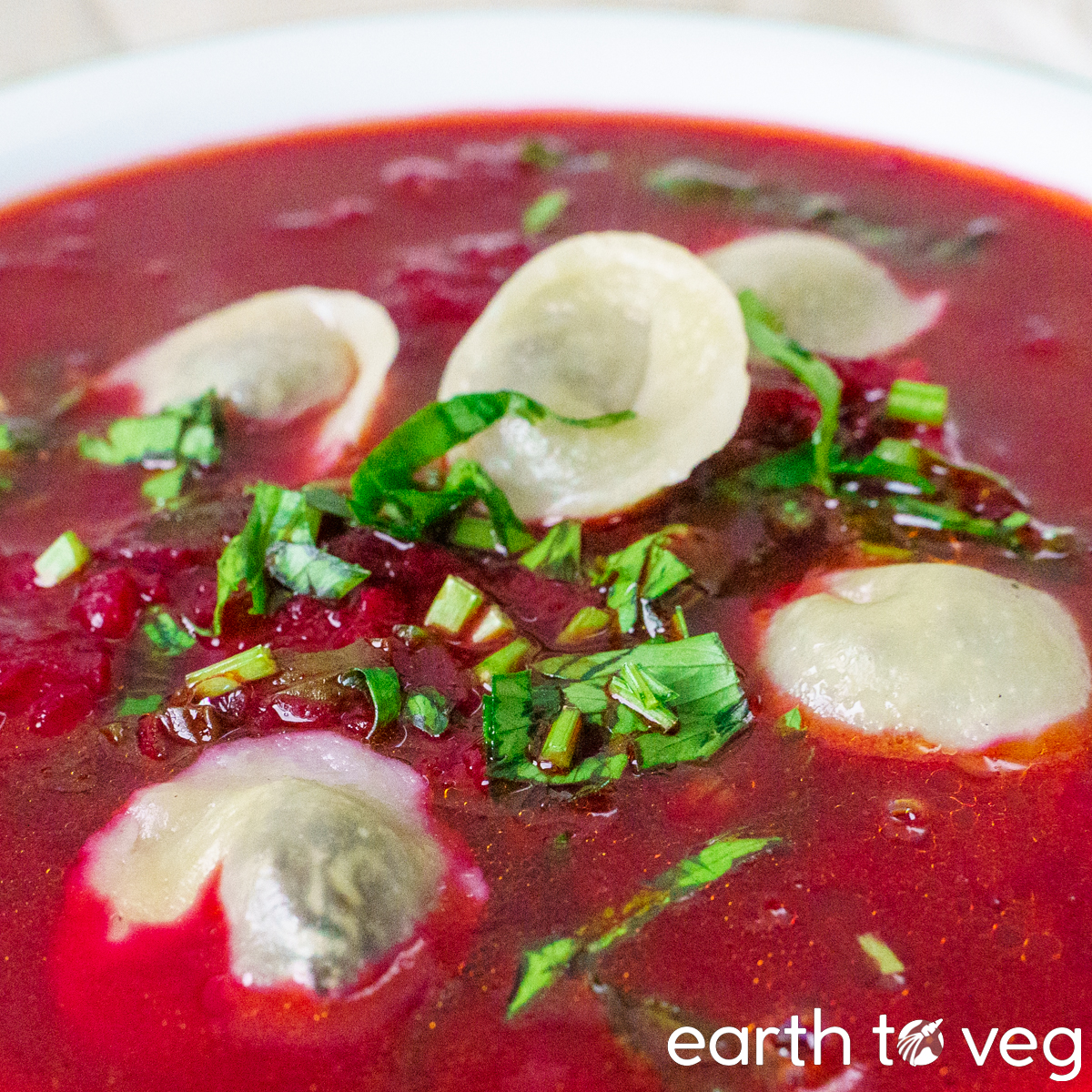
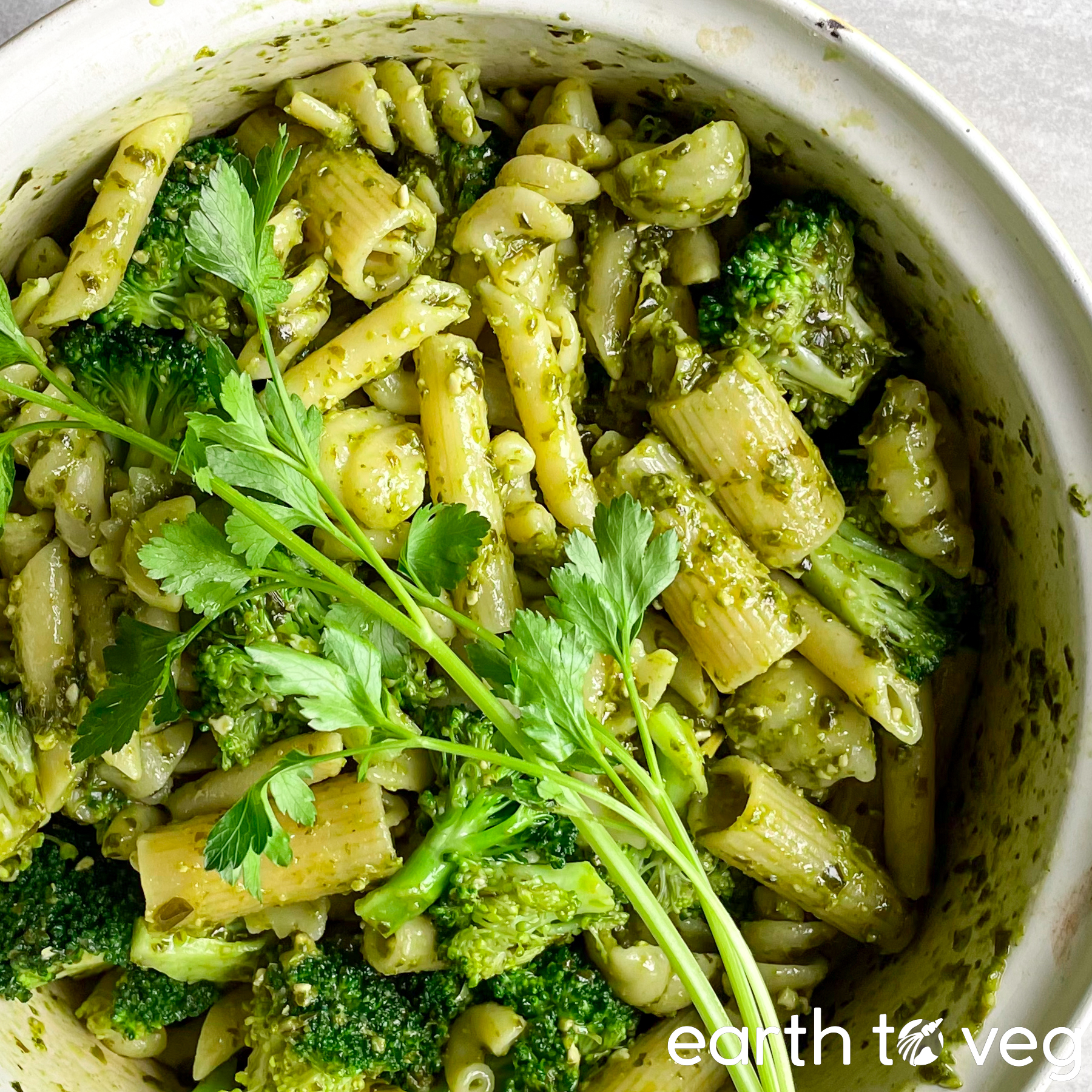
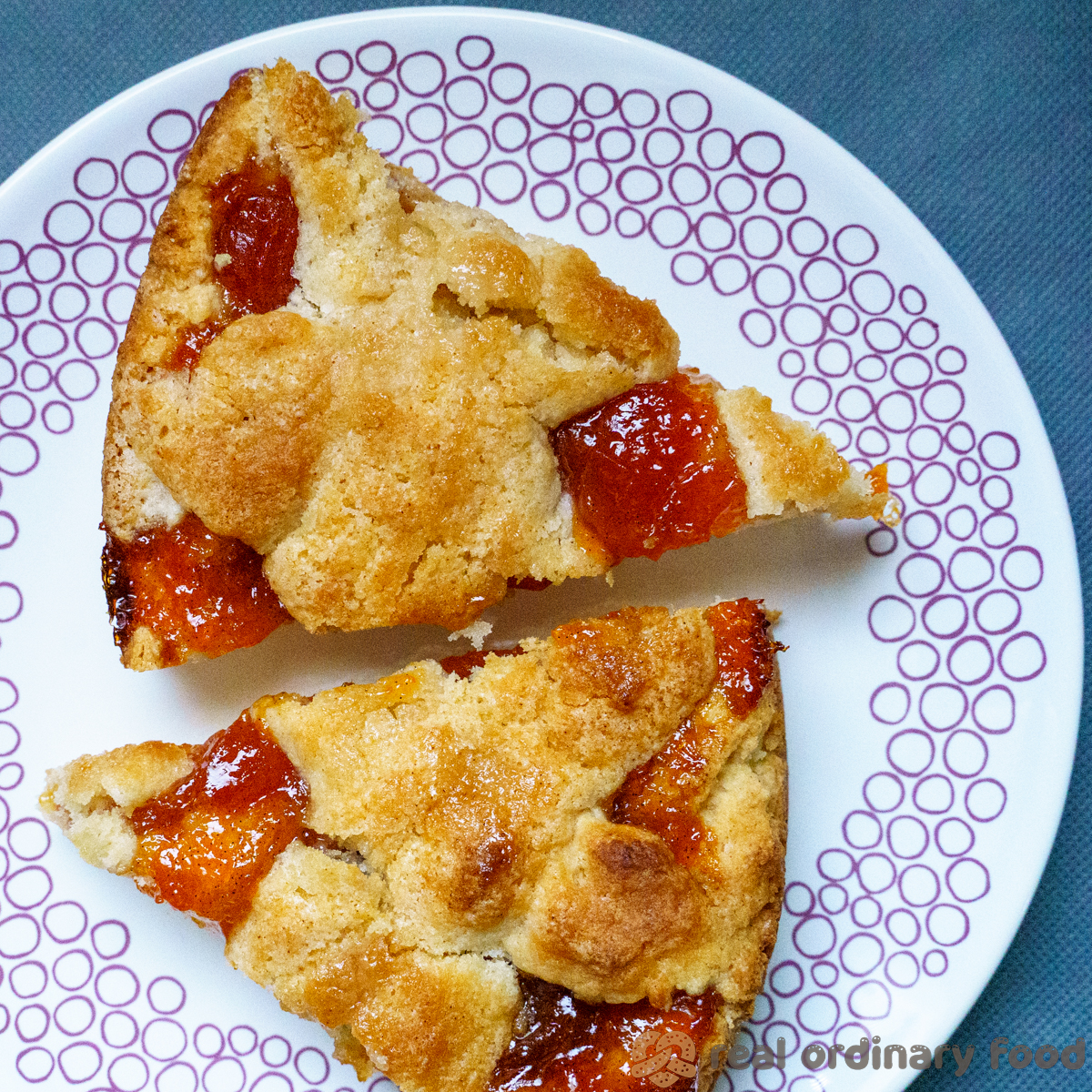
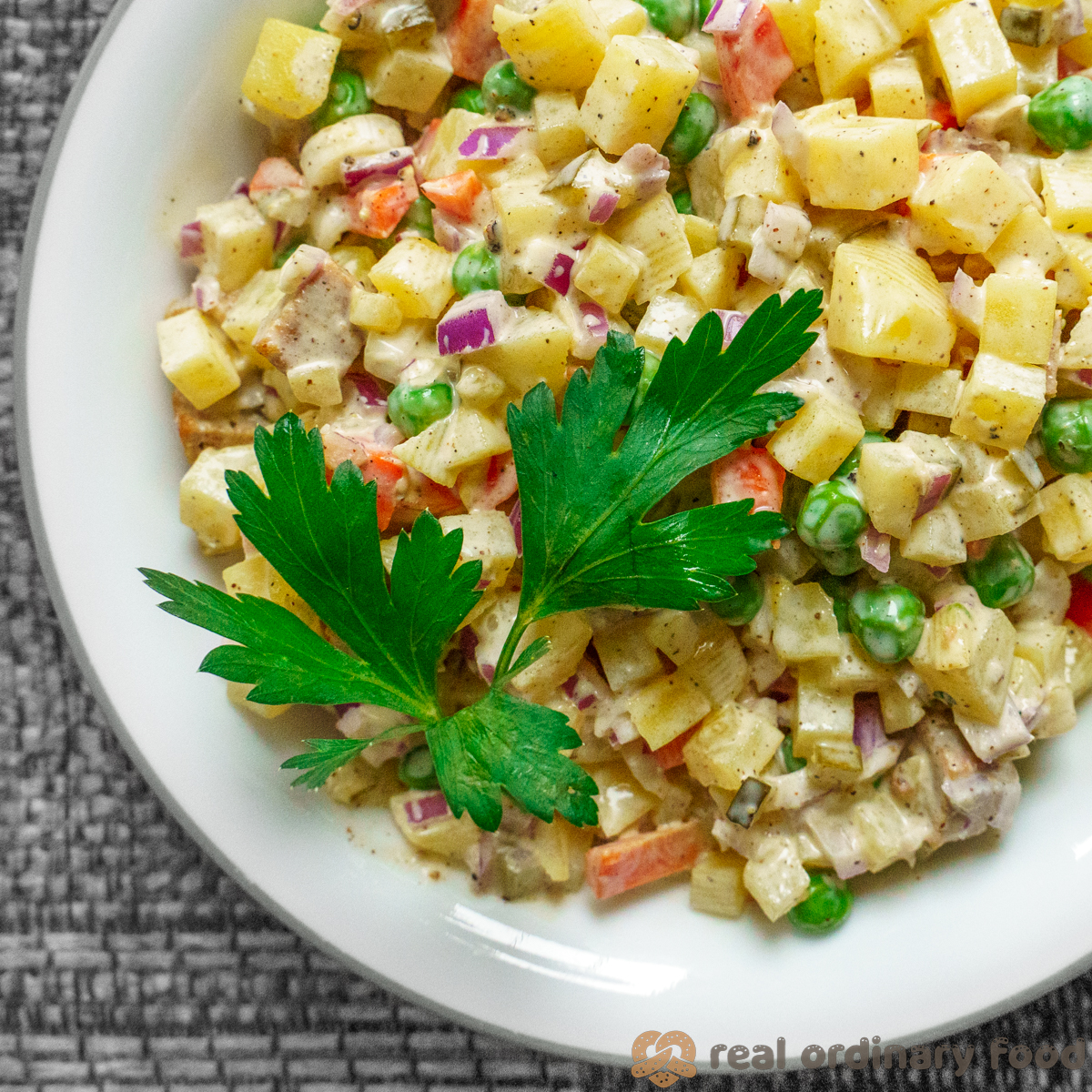
Recipe Card
Did you make this recipe? Please consider leaving a rating below to let me know how you liked it.
You can also take a picture and tag me on Instagram @earthtoveg, I will shout you out in my Stories!
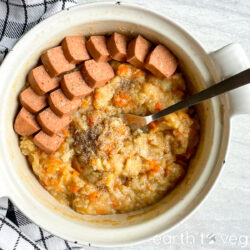
Vegan Dutch Hutspot
Use Imperial/Metric buttons below to toggle between volume vs weight measurements. I recommend weighing out your ingredients for best results.
Equipment
- Dutch oven (use a 3-quart capacity for 1 batch, or 5-quart if doubling)
- Potato masher
Ingredients
- 2 tbsp vegan butter
- 1 lb potatoes or parsnips
- ½ lb carrots
- ½ lb onions
- ½ cup diced vegan ham or bacon *optional
- 1 bay leaf
- 1 cup vegetable stock *can sub with Better than Bouillon No Beef Base
- salt and pepper to taste
Instructions
- Roughly chop the vegetables (potatoes, parsnips, carrots, onions).
- Add all ingredients except salt and pepper, in order listed, to a Dutch oven. Set it on medium heat.
- Once the stock comes to a boil, turn the heat down to medium-low. Simmer, covered, for 20 minutes.
- Using a potato masher, mash the contents into a lumpy consistency. Continue to cook, uncovered, until the stew has thickened to your liking—around 10 minutes for me.
- Add lots of salt and pepper to taste. Serve on its own or with Vegan Sausage.

I’m from Holland and this has long been my comfort food, so I make it regularly! I freeze hutspot all the time and it works fine. I never use veggie stock, but do add a tablespoon or more of apple cider vinegar, which I feel really lifts the flavors. When I grew up, my mom also added cooked peas to this, which, though not traditional, adds a nice texture and flavor element, as well as vibrant color.
This is great to know, thanks Stans! I’ve updated the post with your experience on freezing hutspot. I’ll have to try your suggestion of apple cider vinegar next time I make this, that sounds like a great addition
I made it last night for the first time and it turned out PERFECT! Thanks.
Amazing! Thanks for your comment 🙂
You have described the recipe so nicely that really helped me lots. I am looking for more of such recipes in future too.